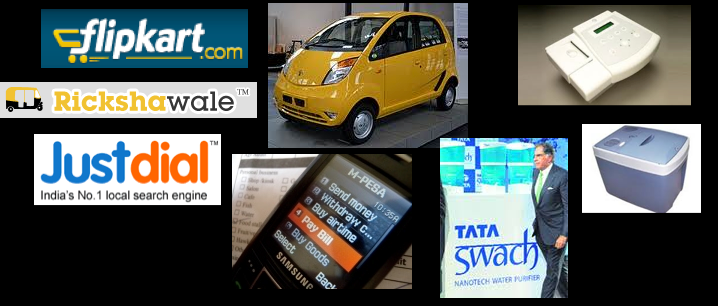Design Led Thinking - Why Emerging Markets? (Part 2 of 2)
 Mahesh Baxi | Posted on
Mahesh Baxi | Posted on  Friday, April 20, 2012 at 8:16AM
Friday, April 20, 2012 at 8:16AM Hello again! Part 1 of 'Design Led Thinking' addressed the 'Why Now?' which cited examples and reasons of why well designed products / websites are becoming key differentiator and brought out reasons as to why design led thinking is the main stream now. This blog is focused around 'Why Emerging Market?' for design led thinking and why developing economies are and will play vital role in shaping and changing everything that we know about design.
There is lots of research and abundant data available to prove that developing economies such as India, China, Africa, and Brazil will play pivotal role for the world economy to sustain and to prevent from pushing it into world recession. UN World Economic forum recently published a report and indicated that if the developed economies don't work closely with developing economies to create employment opportunities, the overall growth will be pushed southward and developed economies will be impacted a lot. Leading analyst firms like Gartner and Forrester have indicated that developing economies will grow at ~5+ % while developed economies are most likely to grow at less than 2 %.
There is a new trend becoming more visible which is south buying from south. For example, countries like Brazil are not longer importing from America, instead they go to China or India. India is importing stuff from China. This 'Global South' phenomena has potential to upset apple cart especially in the developed economies. In addition, there are plenty of opportunities in the emerging markets and that trend will continue for next couple of decades to come.
The other most important data point and realization is that next decade is going to be all about consumer driven markets where volumes are huge, more number of young people who have more spending power and all these are available in emerging markets.
However, what is the key difference between opportunities of developed economies vs. developing economies? It is a phenomena called 'Frugal Innovation' or in other words described as 'NOT Value for Money BUT Value for Many'. These innovations are not addressing the needs of urban areas but instead trying to address rural and less literate class of people in emerging markets. When you are creating a product for the masses, the design becomes paramount and utterly important factor. Here are some examples of 'Frugal Innovation':
- Tata Nano - vision to put a car in common man's hand at very affordable price and in fact, creating cheapest car in the world. This vision was well executed by Tata group and Tata Nano is a great example of how innovative product like Nano was made available to the masses including in rural areas.
- GE MAC 400 - This is portable ECG machine and one of the finest invention. This product ensured that ECG now can be carried out at your home, Doctor's can take it with them for home visits, to rural areas, to schools and much more. It was absolutely necessary for patient to go to the hospital for the ECG check-up.
- Tata Swach - One of the cheapest water filter available which gives clean drinking water. The key features include cost and filter which lasts up to 200 days and doesn't require electricity. This allowed rural areas to buy this product where electricity is not available during the day and made it possible for them to drink clean water all the time.
While these are great examples of physical products, innovative software product ideas have been on upswing lately. For example:
- Flipkart.com - a great success story of re-creating amazon like experience in India. Not only that website design was innovative, simple and easy to use - they came up with 'Cash on Delivery' payment method which was first of its kind and allowed people who don't use credit or debit cards possible to buy materials from their website.
- Rikshawale.com - what a novel idea this is. An amazing idea supported by easy to understand website to book an auto anywhere in Mumbai without running into any kind of hassles or worrying about faulty meters etc. This has been a great success in a city called Mumbai and now they are releasing a mobile version of this application.
- M-PESA - This is an application used in Kenya. There are more number of financial transaction that happens on this application than all of the Western Union transactions combined globally. This application is designed to suit the local Kenyan market.
- JustDial.com - Last but not least, a simple idea followed by simple business model and easy to use website. A great example of how to put a service design in play for the masses.
With lots of these examples, I would say we have barely scratched the surface in the emerging markets. The opportunities are everywhere to innovate, to create value for the masses and to make an impact through design led thinking to make the product usable for the target audience. My plea to every designer in the developing economy would be pay attention to needs of the masses and design products / websites accordingly. It may not be too far where definitions of developing and developed economies will remain same but countries which come under these categories may change. I do feel strongly and passionately that 'design led thinking' is now main stream and is here to stay for long time to come.
I would like to end this blog with the following quote from none other than Steve Jobs:


Reader Comments